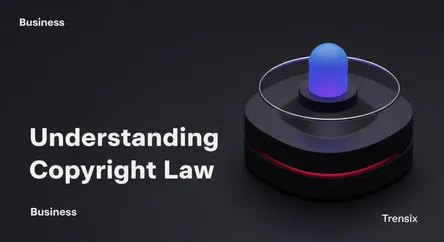Business
Understanding Copyright Law

Learn what copyright is, why it's vital for startups, and how this legal right protects your original creative works from unauthorized use.
What is it?
Copyright is a type of intellectual property law that grants the creator of an original work exclusive rights to its use and distribution. This legal protection applies automatically to tangible creative works, such as software code, website design, marketing copy, logos, and product manuals. It protects the specific expression of an idea, not the idea itself. For example, copyright can protect your app's source code, but not the general idea of a photo-sharing app. The owner has the sole right to reproduce, distribute, perform, and display the work, or to create derivative works based on it.
Why is it trending?
In the digital age, content is king, and for startups, it's also a core asset. Copyright is trending because the ease of digital reproduction has made protecting these assets more critical than ever. Startups rely heavily on unique software, branding, and content to build their competitive advantage and attract investors. Securing copyright is fundamental to safeguarding these innovations from being stolen or copied by competitors. Furthermore, the recent rise of AI-generated content has sparked intense debate and legal challenges, pushing copyright law into the spotlight for tech-focused businesses.
How does it affect people?
For startup founders and creators, copyright is a shield and a valuable asset. It protects their hard work, allowing them to control how their creations are used and to monetize them through sales or licensing. This protection builds company value and provides legal recourse against infringement, which can be devastating for a new venture. For employees, it clarifies ownership of work created within the company. For other businesses and the public, it establishes clear rules for using creative works, fostering a fair environment where innovation is rewarded and respected, preventing the unauthorized use of software, images, and text.